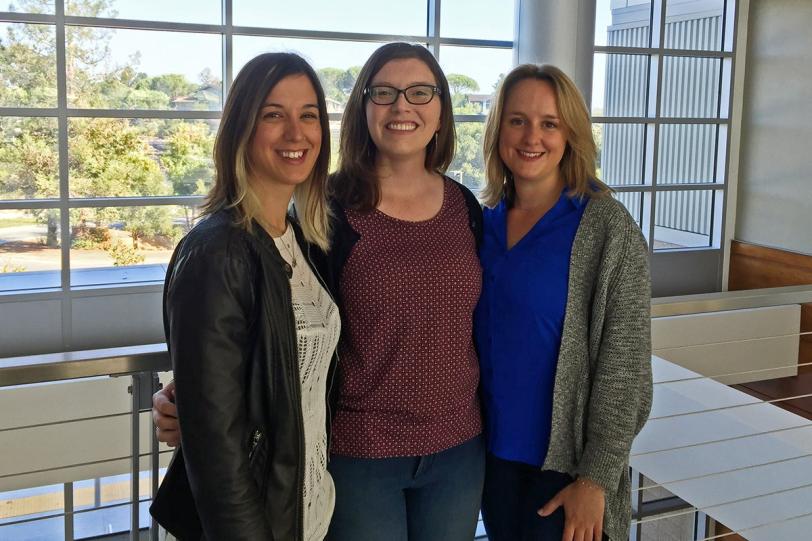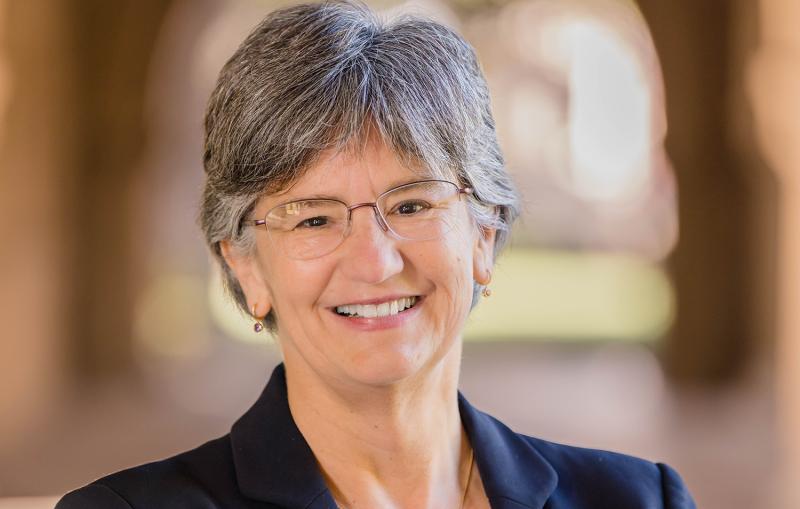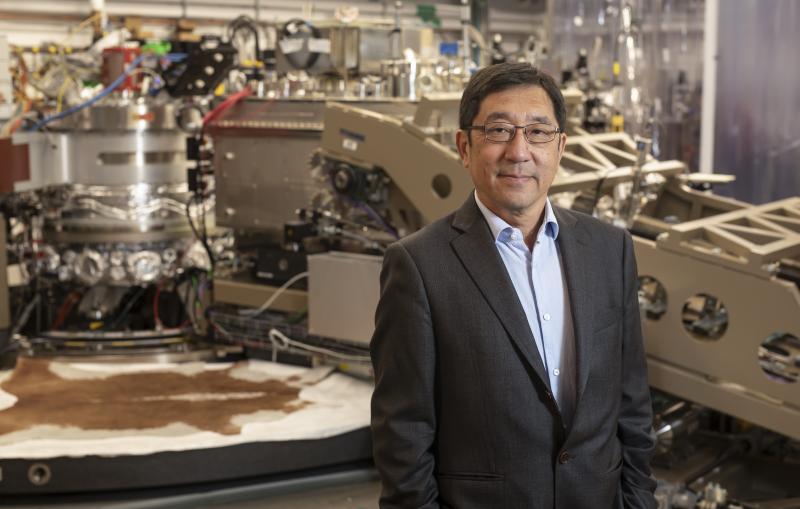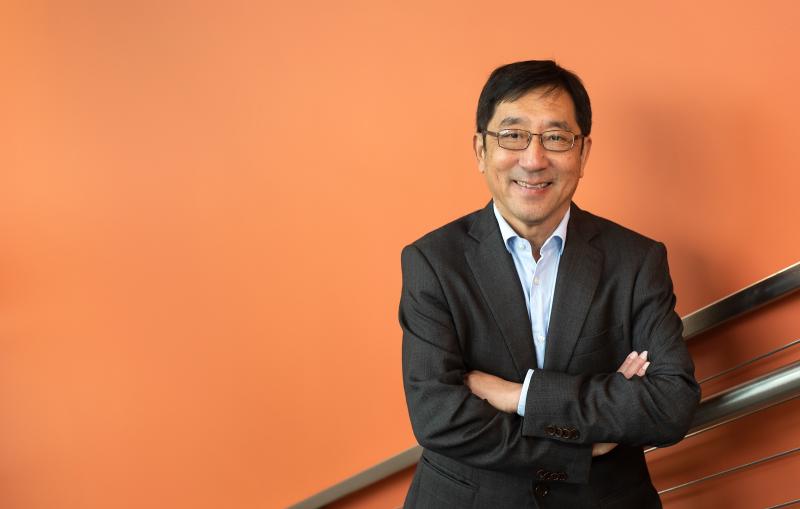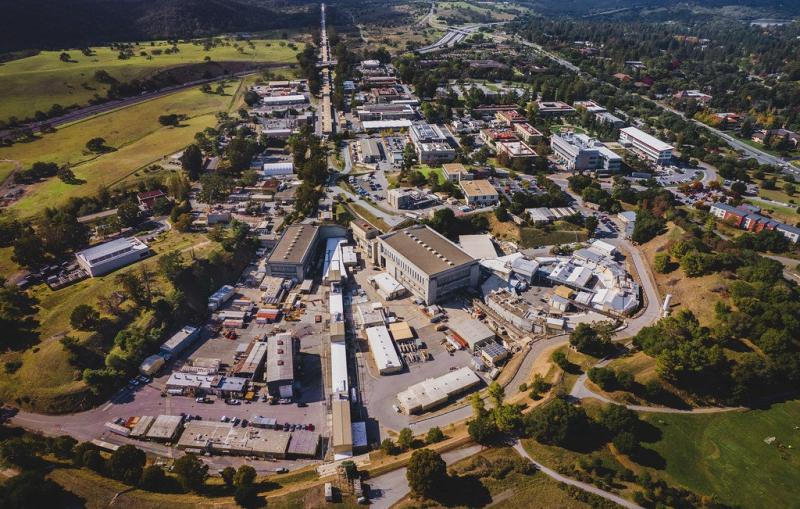Q&A: Postdocs Encourage Middle-schoolers to 'Embrace the Unknown'
SLAC postdoctoral scholars recently participated in Tech Trek program to engage in a lively discussion with middle-schoolers.
Laura Schelhas, Beth Miller and Anna Wise are highly accomplished postdoctoral scholars at the Department of Energy's SLAC National Accelerator Laboratory. They conduct research under the supervision of Mike Toney, a distinguished staff scientist at the Stanford Synchrotron Radiation Lightsource (SSRL), a DOE Office of Science User Facility. Schelhas researches new material discovery and design for solar applications, Miller studies next-generation lithium sulfur batteries, and Wise is implementing a new imaging technique to acquire very high-resolution images of materials.
All three researchers are pleased with their career paths and enjoy the collaborative atmosphere at the lab while working on their scientific research. They wanted to pass their excitement on to the next generation and share the way science played an unexpected role in their positions today.
“One day I got invited by another female researcher at SLAC to this program called Tech Trek, and I was intrigued enough to give it a try," Wise said. "I realized how valuable the program is, and now I make it a point to go every year.”
In an effort to increase women’s representation in STEM careers, the American Association of University Women launched the Tech Trek program, which is designed to develop and increase interest in math and science among middle-school girls. The program offers a mind-expanding opportunity for teens at a critical age, when they haven’t yet fully established their course of studies and can still embrace positive influences toward science.
According to a 2015 U.S. Department of Commerce Foundation survey, while women account for 43 percent of total STEM jobs, they only account for one-quarter of core STEM jobs.
Tech Trek is a weeklong camp that has been running for over 17 years at the Stanford campus, and could prove to be a fertile ground for future SLAC researchers. The program is trying to level the playing field for middle-school girls in science, technology, engineering and mathematics by encouraging girls at a young age to pursue their interest in STEM.
The three Tech Trek volunteers recently participated in the program’s Professional Women’s Night presentation to engage in a lively discussion with the middle-schoolers and answer their questions. We talked with them about their journeys into science at SLAC and what advice they would offer teens exploring their potential future interests.
What surprised you most about working at SLAC?
Schelhas: The accessibility of key scientists in our field of research.
Wise: We read their books in college, and now we get to engage them on a daily basis.
Miller: Besides the energy research that is unique to the place, I like to walk or bike to work, and am still amazed by the beautiful sunsets, especially coming from Chicago -- I appreciate the gorgeous weather.
Why was it important for you to get involved with girls through Tech Trek?
Schelhas: When I was their age, I thought an engineer was a mechanic; I thought that science had to do with medicine. I wanted the girls to learn a bit more about what science is.
Wise: Changing the stereotype of what STEM careers are; those careers can take you anywhere in the world. The world is your oyster.
Miller: I wanted them to know that all options are available for them. I explained that you don’t have to choose now; you can discover your passion later on, and life can evolve a lot. This is when I saw the most lightbulbs shine in their heads – ‘Oh, I have lots of opportunities.’
What did you not expect, coming to the Women’s Night?
Wise: One girl said she’d been actively discouraged from pursuing physics, because she was a girl.
Schelhas: I was surprised to see a large number of young girls who were that excited about science, so I feel that the program is really working. I’m used to coming into most rooms as a minority and was surprised to see so many females interested in STEM. They found a way to reach out to young girls at a unique age, before making a commitment to a field of study. The girls saw a huge diversity among the women who participated that evening. Everyone looked different, with different styles and different careers.
How would you change a young girl’s mind if she thinks being a scientist is a job for boys?
Schelhas: I told one girl that just because it’s difficult doesn’t mean you should not follow through. Your brain is a muscle and you have to develop it, like in sports; it takes practice.
Wise: Every step of the way, there is help available to support you if you’re experiencing hardship.
Miller: If you struggle with something, it doesn’t mean you should quit. Everyone struggles with something along the way.
What are they giving up by taking on this journey? What are they mostly gaining?
Schelhas: You give up some of your personal time; the work-life balance is biased towards work. But you get to be the first person to discover something that no one else has ever seen before.
Miller: You travel a lot and miss home, but you get to explore new places and other cultures, and meet other scientists at conferences.
Wise: I gave up the proximity of family and friends who are still in England, but I’m conducting cutting-edge research with world-renowned experts.
What would be the most valuable thing they can do in school, beyond the classroom, to be a great scientist?
Schelhas: Getting involved in non-scientific things. Playing sports, you learn to become a team player, to communicate with your teammates.
Wise: I volunteered with the Scouts; it’s a good place to learn about problem solving.
Miller: I was interested in art and music; I think that it made me approach math and chemistry differently.
What’s a glimpse of wisdom you could offer the girls?
Wise: Don’t think that if you haven’t done something at a particular time, you can’t achieve it later in life.
Schelhas: Enjoy what you are doing at the time; be open to opportunities as they are presented to you. Be adventurous!
Miller: It’s never too late to discover a new passion; be receptive and open-minded.
If you weren’t a scientist, you would be….?
Miller: I would own a bakery.
Schelhas: I would go to culinary school.
Wise: I would become a vet.
For questions or comments, contact the SLAC Office of Communications at communications@slac.stanford.edu.
SLAC is a multi-program laboratory exploring frontier questions in photon science, astrophysics, particle physics and accelerator research. Located in Menlo Park, Calif., SLAC is operated by Stanford University for the U.S. Department of Energy's Office of Science.
SLAC National Accelerator Laboratory is supported by the Office of Science of the U.S. Department of Energy. The Office of Science is the single largest supporter of basic research in the physical sciences in the United States, and is working to address some of the most pressing challenges of our time. For more information, please visit science.energy.gov.
